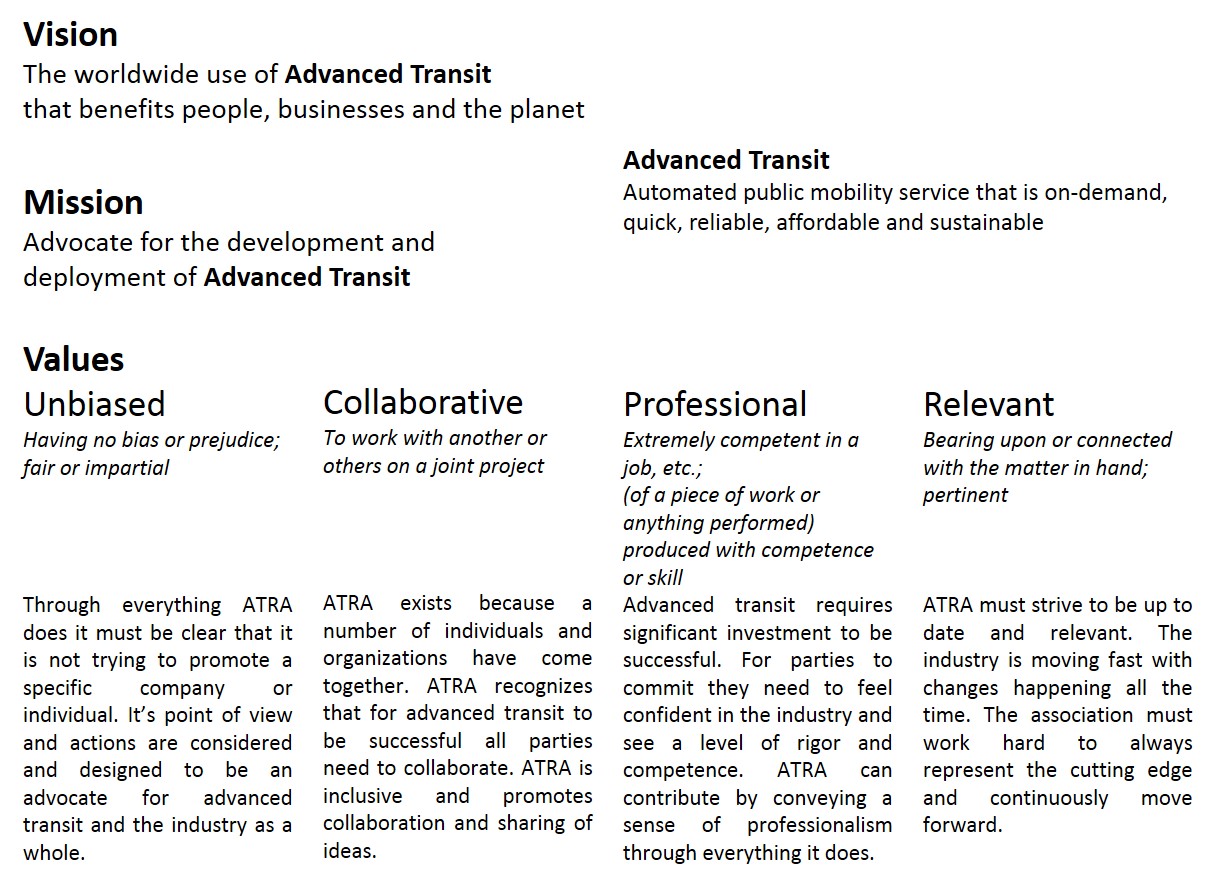Mission & Vision
ATRA is a diverse group of people brought together by the common realization that the transportation systems of the past can not meet the transportation needs of the future, or even the present. As non-profit corporation, ATRA’s purpose is to encourage the development and deployment of advanced transportation systems that will benefit society.
The Advanced Transit Association (ATRA) is an international association of transportation professionals, engineers, architects, urban planners, students, educators, and enthusiasts that promote the consideration of advanced transit options. Membership is open to anyone who is willing to take a fresh look at new ways to meet our mobility needs. We do not endorse any particular company or system, rather we strive to serve as an objective information resource to help decision makers navigate the often complex issues surrounding transportation choices particularly as it pertains to new technology.
President’s Letter
Dear Reader,
ATRA’s primary purpose is to leverage advanced transit to improve the quality of urban life. To do this, we need to understand advanced transit and what we mean by quality of urban life. Let’s examine both of these concepts.
Fundamentally advanced transit is the transportation of people (and goods) in a way that is superior to conventional transit. It seeks to improve transit by applying some, or all, of the following techniques:
- Using small vehicles accommodating people traveling to one, or very few, destination stations
- Locating numerous stations on sidings (offline) so walking distances are short and vehicles not destined there can pass by without stopping
- Running the vehicles on a network of dedicated guideways linking all stations and separated from pedestrians and other traffic thus enhancing safety and alleviating surface congestion
In order to achieve a reasonable capacity and level of service at a reasonable cost, based on the above techniques, an advanced transit system will typically have:
- Driverless computer control of vehicles
- Short headways (time between vehicles)
- Typically facilitated by onboard switching
Since there is no requirement to apply all of the above criteria, advanced transit can take many different forms. Indeed driverless taxis may evolve to be a form of advanced transit. This leads us back to consider cars, transit and quality of life.
Some believe that automated taxis will remove the need for transit. However, history indicates that there is no one silver bullet. It is far more likely that automated taxis will attract some people from cars and some from conventional transit, and that advanced transit will do the same. Also, it is likely that automated taxis and advanced transit will both feed passengers to conventional transit.
In terms of quality of life, advanced transit has the possibility of enabling car-free communities where the surface is dedicated to walking and biking and, instead of being paved, areas not used by buildings could be mostly vegetated. The price to be paid for this will be (hopefully aesthetic) overhead guideways accommodating numerous quiet and iconic small vehicles. Driverless cars, on the other hand, may increase urban sprawl, vehicle miles traveled and area of pavement, making walking and biking more difficult.
I know which future I would prefer.
If you are not already a member, please join ATRA. Membership is an opportunity for you and or your organization to contribute to a better world by leveraging advanced transit to improve mobility and accessibility for all, while increasing safety and reducing energy use and pollution. ATRA membership works best for those that get involved and contribute.
Best regards,
Peter J. Muller, P.E., President
If you want to become a member of ATRA please visit the membership page.
Should you have any questions, please don’t hesitate to contact ATRA.

